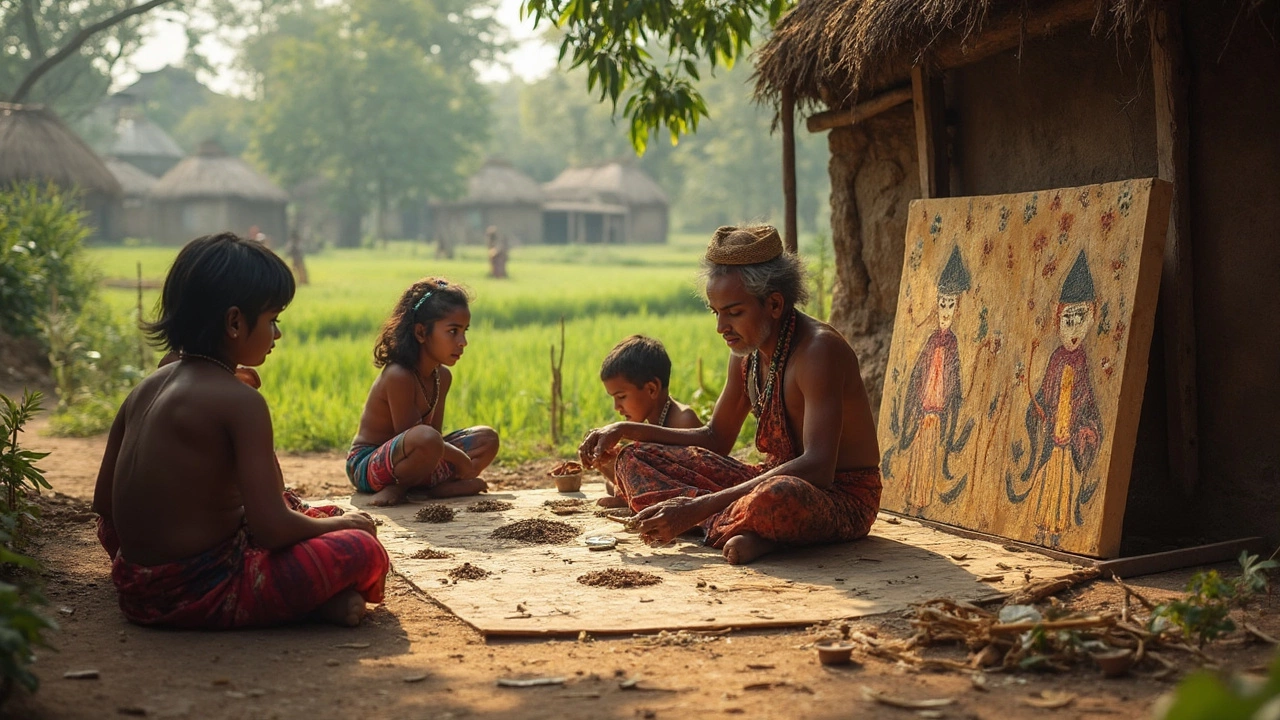Maharashtra Crafts: A Simple Guide to Traditional Art and Handicrafts
If you’ve ever wondered what makes Maharashtra’s art scene special, you’re in the right place. The state is famous for bright paintings, silky fabrics, sturdy sandals and lots of other hand‑made goodies. Below you’ll find the most popular crafts, how they’re created, and tips for getting the real thing.
Key Crafts You Should Know
Warli painting is a tribal art form from the coastal villages. Artists use white pigment on a mud base and draw simple geometric shapes that tell stories of daily life. The whole process is quick – a brush, a few dots and lines, and the picture is ready. Because the designs are simple, you can spot an authentic piece by the bold outlines and lack of bright colors.
Paithani silk comes from the town of Paithan. The weaving takes days and involves a special loom that creates thick, shiny threads. The hallmark of a real Paithani is a gold or silver border and a peacock motif in the center. If you see a cheap look‑alike, the border will be thin and the colors will look faded.
Kolhapuri chappals are the sturdy leather sandals you see on streets and in markets. Artisans cut the leather, stitch it by hand, and add a small wooden heel. A genuine pair feels heavy, has a smooth finish, and the stitching is even. Look for the “Made in Kolhapur” tag if you want the authentic version.
Wooden toys and furniture from the regions around Nashik are carved with simple patterns. The wood is usually teak or teak‑like species, and the finish is a natural oil. Because the designs are plain, you can feel the smoothness and check for any rough spots to know if it’s hand‑carved.
Jewellery such as “Nath” (nose rings) and “Kolhapuri Saaj” (necklaces) use brass, silver or copper. The pieces are often stamped with tribal motifs. Look for a solid feel and a small stamp indicating the maker’s mark.
How to Spot Authentic Pieces and Support Artisans
First, buy from reputable stores or directly from the artisans’ cooperatives. Many villages have weekly markets where you can meet the makers. Ask about the materials – genuine Paithani uses pure silk, while fake versions mix cotton. For Warli paintings, the artist usually signs the back of the canvas.
Second, check the price. Hand‑made items cost more than machine‑made copies. If a “Paithani” costs a fraction of the usual price, it’s likely not real. Same with chappals – cheap leather means low quality.
Third, look for certifications. Some crafts have a Geographical Indication (GI) tag that guarantees origin. The tag appears on the label or on a small tag attached to the product.
Finally, think about care. Silk needs gentle washing, leather needs occasional oil, and wood benefits from polishing with a dry cloth. Proper care will keep the item looking good for years, and you’ll appreciate the effort that went into making it.
Whether you’re decorating your home, looking for a unique gift, or just curious about Indian culture, Maharashtra’s crafts offer a real taste of tradition. Keep these tips in mind and you’ll find pieces that are both beautiful and truly authentic.
